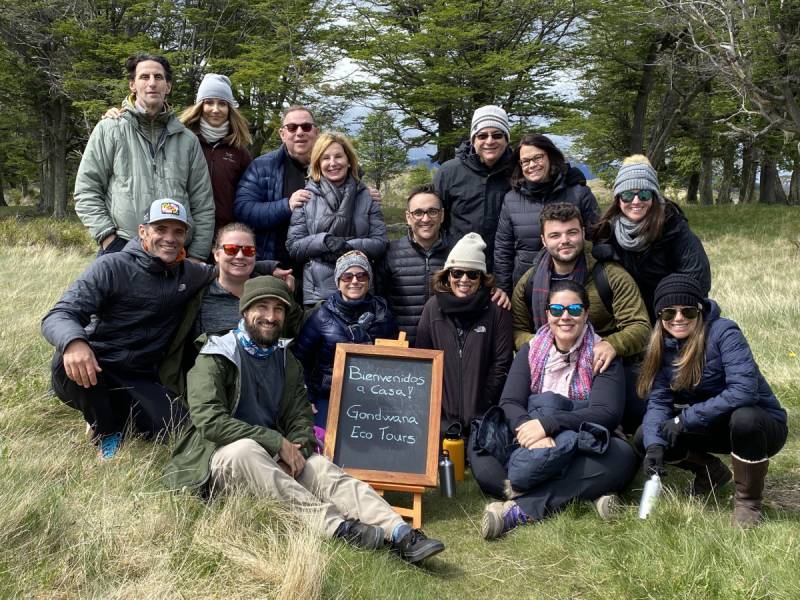The Forbidden Dance: Argentine Tango
Download Travel Details >PRIVATE & SMALL GROUP TOURS TO THE WORLD'S BEST DESTINATIONS
Join Us In Argentina!

How Tango Defines Buenos Aires Culture
In the heart of Buenos Aires, the rhythm of tango pulses can be felt everywhere – defining the city and its inhabitants. Argentine tango is more than just a dance. For porteños, the people of Buenos Aires, tango is a way of life as well as an integral part of Buenos Aires culture. From the elegant milongas to vibrant street performances, tango dance invites visitors and locals to explore the magic and sensuality of this iconic dance.
What is Argentine Tango?
Tango dance entered Buenos Aires culture in the late 19th century. It originated in the working-class neighborhoods of Buenos Aires and was born through a fusion of dance and music from European immigrants, African descendants, and native Argentinians. This unique cultural expression was originally seen as provocative and scandalous, and was relegated to bars, brothels, and the streets. However, the Argentine tango gained popularity in Buenos Aires and even spread across Europe, gaining special popularity in Paris in the early 20th century.
The growing international popularity of the dance spurred Argentina’s upper classes to accept tango and helped it evolve into the dance form we know today. Argentine tango achieved its golden age in the 1930s and 1940s, when orchestras composed tango music that helped make the dance a defining feature of Buenos Aires culture. Today, tango dance has been recognized by UNESCO as a part of Argentina’s cultural fabric and a defining feature of the country’s identity.
Where to Find Tango in Buenos Aires
If you are planning a visit to Buenos Aires, exploring the magic of tango dance should be on your bucket list! The first thing to know, however, is that tango comes in many forms. From the most elaborate stage shows to the more casual milongas, Argentine tango offers visitors an immersive experience they can simply observe – or the chance to kick up their heels and learn to dance Argentine tango from a professional.
- Professional stage shows: If you want to experience Buenos Aires culture at its finest, visit a professional tango stage show. Buenos Aires offers many opportunities to see impressive tango dance shows, which often include live orchestra performances and a five-star dinner for a truly special experience. Venues range from extremely fashionable to more traditional, and some are worth a visit simply for their period decoration and ambience.
- Milongas: Milongas are traditional social gatherings that allow amateur dancers to participate in tango dance. These gatherings can take place anywhere, from elegant halls to neighborhood community centers to corner bars. While some milongas are casual, more formal gatherings encourage formal dress and the observance of Argentine tango’s traditional codes and rituals. If you are intimidated by the prospect of a formal milonga, look for more modern events with a relaxed atmosphere where you can try out new steps.
- Listen to tango music: Tango music began in bars and dance halls to accompany the genre’s dancers, but in recent decades, the music has taken on a life of its own. Argentine tango music now features complex orchestration and dramatic orchestrations. Today, tango has been established as a form of music to be listened to, as well as danced to. If you are a fan of music as well as dance, some milongas feature live orchestras as well as the opportunity to dance.
- Take a class: What better place to learn Argentine tango than in the birthplace of the dance? Although the dance is perceived as complex and requiring patience to learn, a class will give you a glimpse into how the dance works and may even be enough to help you master a basic sequence of steps to use on a dance floor. Many milonga venues host classes before the evening dance begins, or you can visit a tango school in the city that offers classes.
What to Wear to A Tango Dance
Tango is more than just a dance; it is deeply entrenched in Buenos Aires culture. One of the most important things a visitor can do when attending a tango show or milonga is to observe the rituals that make the dance so special. Dressing appropriately is key to fitting in and respecting Argentine tango as a complex, unique cultural experience.
- Dress code recommendations for men: Dress pants or chinos, collared shirt, blazer (optional), formal but comfortable shoes.
- Dress code recommendations for women: Elegant blouse with skirt or pants, simple mid-length dress, comfortable yet stylish shoes.
By observing the unspoken rituals and codes of tango, you’ll show your respect for local culture and people.
Top 5 Tango Neighborhoods to Visit
Buenos Aires is home to several tango-inspired neighborhoods, each offering a unique glimpse into the history and culture of this iconic dance. These neighborhoods reflect the deep connection between Buenos Aires and tango, each offering a different facet of the dance’s cultural significance.
|
Neighborhood |
Link to Tango |
|
This Buenos Aires neighborhood is the birthplace of Argentine tango, and is one of the most vibrant neighborhoods in Buenos Aires. Visitors can see tango street performances at Plaza Dorrego during the Sunday market, or visit historic venues like Br Sur and El Viejo Almacén to watch or participate in dances. |
|
|
Home to Caminito, this neighborhood is famous for tango music and dance, as well as its striking street art. Visitors can enjoy visiting local galleries and markets, and watching passionate street performances as they explore the neighborhood. |
|
|
If you’re looking for a contemporary Argentine tango experience, Palermo is a must-visit destination. Modern tango bars and milongas blend traditional and experimental tango styles, and the crowds are generally younger. La Viruta, one of the most popular milongas in the city, is located in Palermo. |
|
|
Almagro |
Home to traditional cafés, bars, and restaurants, Almagro offers tourists a taste of Argentine cuisine in a laid-back setting. But it’s also a key neighborhood for tango culture, with traditional milongas like Club Gricel and Salón Canning providing an authentic tango dance experience compared to more tourist-oriented areas. |
|
Abasto |
Abasto is a mecca for those interested in tango’s history. Known for its connections to the famous tango singer Carlos Gardel, Abasto is home to a tango museum as well as many tango-inspired attractions. Visitors can enjoy traditional tango shows or visit a milonga to try out a few steps. |
Stepping Out: Argentine Tango and Milongas
A milonga is a traditional social event or gathering where people dance the Argentine tango. It follows a structured format where dancers congregate to enjoy traditional tango music and dance. Unlike a tango performance, a milonga is a more social and interactive space where dancers of all skill levels come to dance, practice, and enjoy each other’s company. The top milongas in Buenos Aires to visit include: La Viruta, El Beso, Confitería Ideal, Milonga Parakultural, and La Bicicleta. If you are planning to experience this part of Buenos Aires culture for yourself, however, there are five key pieces of etiquette to follow:
- The Cabeceo: This traditional way to dance is a ritual known as the cabeceo, which includes a subtle nod of the head or eye contact with the person you want to invite to dance. Do not walk directly up to someone and ask them to dance, as this is considered disrespectful!
- Courtesy: As illustrated above, politeness and courtesy are de rigueur at a milonga. If you want to decline an invitation to dance, do so politely. Likewise, if you are turned down, don’t take it personally.
- Personal space: While tango is considered a sensual dance, the participants must always keep the comfort level of both partners in mind! It is considered polite to adapt your embrace on your partner’s comfort, and to remain aware of personal boundaries.
- Respect the Ronda: The circular flow of dancers at an Argentine tango is known as the Ronda. Dancers should always stay within their space and avoid movements that disrupt others. Experienced dancers always dance close to the center of the floor, while beginners should stay toward the outer edge of the dance floor.
- The Tanda: A milonga organizes dances into sets of three or four songs called tandas, with a short break in between. It is considered respectful to dance the entire tanda with one partner, then thank them for the dance when the tanda is done.
Exploring Buenos Aires Culture through Tango
The sensual Argentine tango is so much more than a dance. For Argentinians, it is an essential part of their culture. This iconic dance explores the history of Argentina’s many cultural groups and highlights the distinct and immersive blending of cultures that occurred in the country over time. If you plan to visit Argentina, make sure you experience a tango dance. Whether you attend a professional show or kick up your heels at a milonga, immersing yourself in this piece of Buenos Aires culture is something you won’t want to miss!

